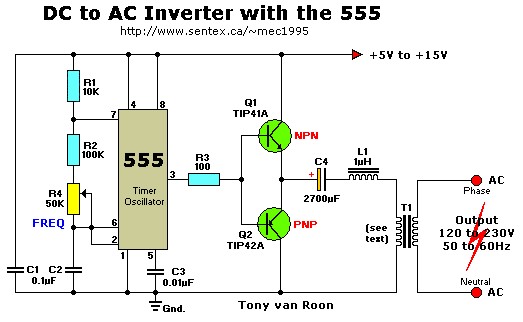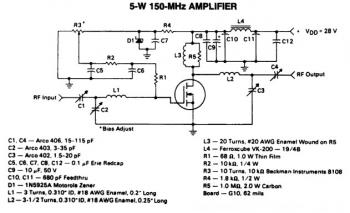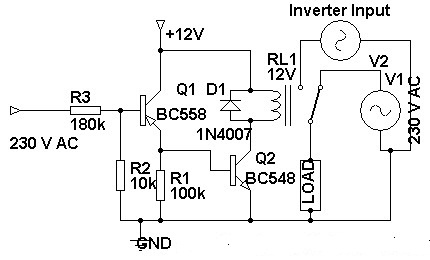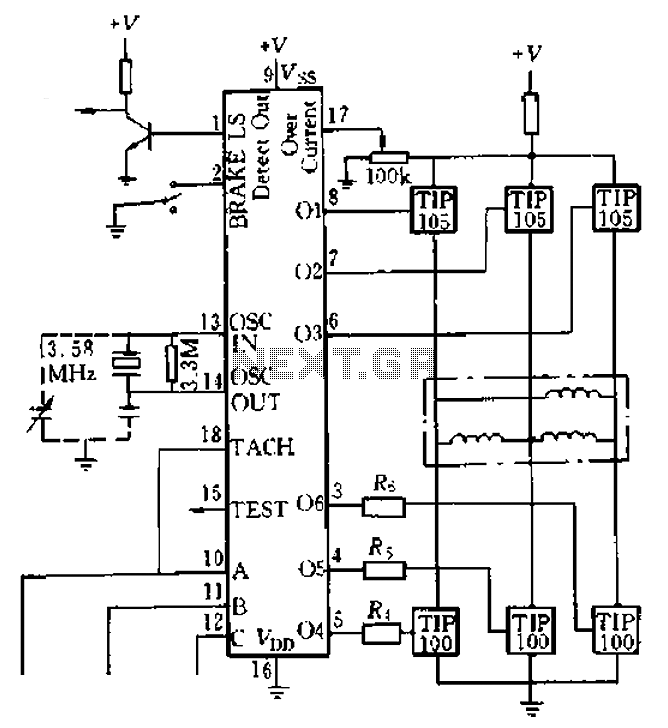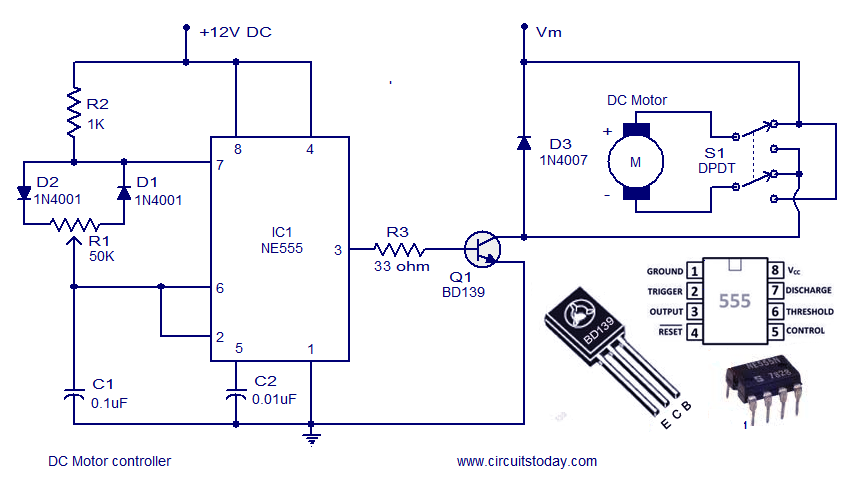
Audio Expander Circuit
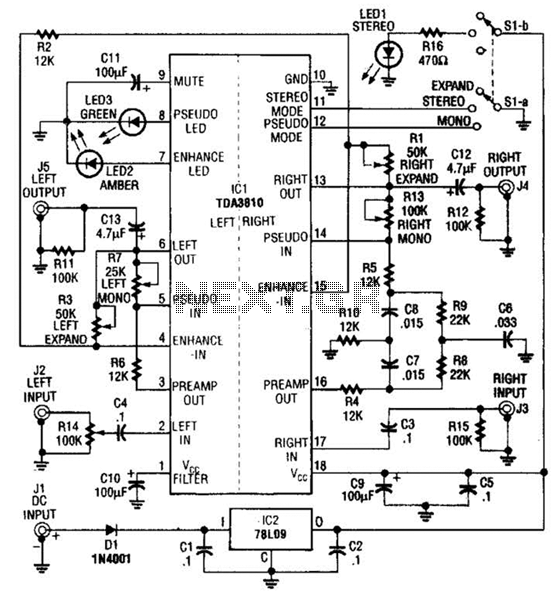
This audio processor utilizes the Signetics/Philips TDA3810N stereo, spatial, pseudo-stereo processor integrated circuit (IC). The processor employs the Philips TDA3810IC device and operates as an expander, pseudo-stereo processor, and audio enhancer. Pseudo-stereo is achieved by directing different frequencies to each channel through active filters.
The audio processor based on the TDA3810N is designed to enhance the listening experience by creating a wider soundstage and improving audio quality. The TDA3810N IC is specifically engineered for stereo processing applications, allowing for the manipulation of audio signals to achieve spatial effects.
In this circuit, the TDA3810N functions as an expander, which increases the dynamic range of the audio signal. This is particularly beneficial in enhancing softer sounds while maintaining the integrity of louder sounds, resulting in a more immersive listening experience.
The pseudo-stereo processing feature is a critical aspect of the circuit. By utilizing active filters, the processor can route different frequency components to the left and right audio channels. This selective routing creates an illusion of depth and space in the audio output, simulating a stereo effect even when the original audio source may be mono.
The design typically includes input and output stages, where input signals are fed into the TDA3810N. The IC processes these signals based on its internal configuration, which may include resistors and capacitors that define the characteristics of the active filters. The output stage then delivers the processed audio to speakers or headphones, ensuring that the enhancements made by the processor are audible.
Power supply considerations are also essential in the design, as the TDA3810N requires a stable voltage to operate effectively. Bypass capacitors may be included to filter out noise from the power supply, ensuring clean operation of the audio processor.
Overall, this audio processor circuit is a sophisticated solution for enhancing audio signals, providing expanded dynamic range and creating a pseudo-stereo effect through advanced signal processing techniques. This audio processor is based on the Signc tics/Philips TDA3810N stereo, spatial, pseudo-stereo processor, IC. This processor uses a Philips TDA3810IC device, and it functions as an expander, pseudo stereo processor, and audio enhancer.
Pseudo stereo is obtained by routing various frequencies to each channel via active filters. 🔗 External reference
The audio processor based on the TDA3810N is designed to enhance the listening experience by creating a wider soundstage and improving audio quality. The TDA3810N IC is specifically engineered for stereo processing applications, allowing for the manipulation of audio signals to achieve spatial effects.
In this circuit, the TDA3810N functions as an expander, which increases the dynamic range of the audio signal. This is particularly beneficial in enhancing softer sounds while maintaining the integrity of louder sounds, resulting in a more immersive listening experience.
The pseudo-stereo processing feature is a critical aspect of the circuit. By utilizing active filters, the processor can route different frequency components to the left and right audio channels. This selective routing creates an illusion of depth and space in the audio output, simulating a stereo effect even when the original audio source may be mono.
The design typically includes input and output stages, where input signals are fed into the TDA3810N. The IC processes these signals based on its internal configuration, which may include resistors and capacitors that define the characteristics of the active filters. The output stage then delivers the processed audio to speakers or headphones, ensuring that the enhancements made by the processor are audible.
Power supply considerations are also essential in the design, as the TDA3810N requires a stable voltage to operate effectively. Bypass capacitors may be included to filter out noise from the power supply, ensuring clean operation of the audio processor.
Overall, this audio processor circuit is a sophisticated solution for enhancing audio signals, providing expanded dynamic range and creating a pseudo-stereo effect through advanced signal processing techniques. This audio processor is based on the Signc tics/Philips TDA3810N stereo, spatial, pseudo-stereo processor, IC. This processor uses a Philips TDA3810IC device, and it functions as an expander, pseudo stereo processor, and audio enhancer.
Pseudo stereo is obtained by routing various frequencies to each channel via active filters. 🔗 External reference

